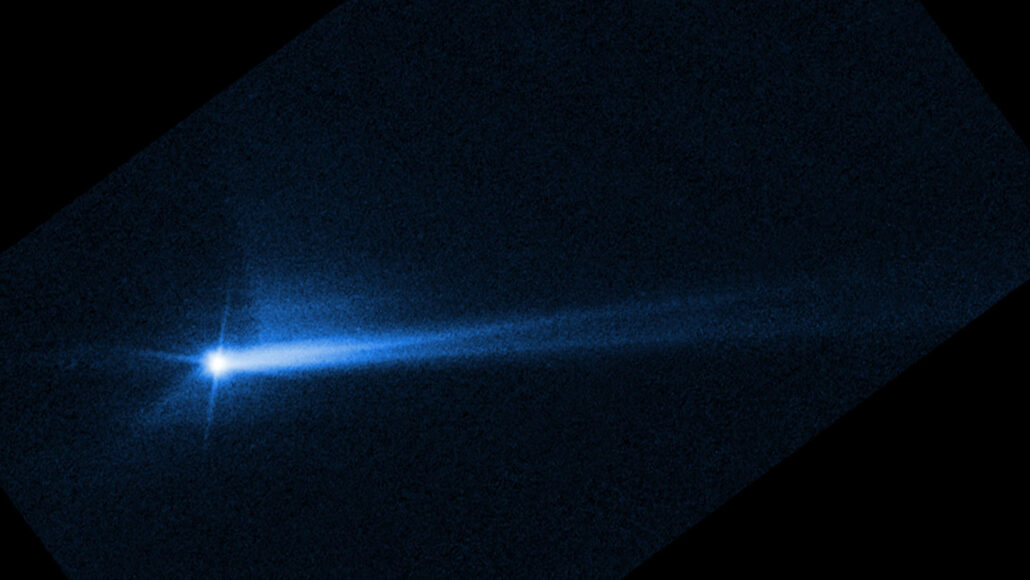In a significant discovery, it has been revealed that when NASA’s DART spacecraft collided with the small asteroid Dimorphos last year, the impact not only altered the asteroid’s orbit but also ejected several hefty boulders into space.
The collision took place in September when DART was directed into Dimorphos, a moonlet orbiting a larger asteroid called Didymos, to test the feasibility of deflecting potential Earth-bound asteroids off course. Three months after the impact, the Hubble Space Telescope observed a halo of 37 previously unknown objects accompanying the asteroid duo in their orbit around the sun, as reported in the Astrophysical Journal Letters on July 21.
These boulders are believed to have been intact when they were launched off Dimorphos, rather than being fragments from larger rocks created during the impact. Computer simulations suggest that the energy from the collision or seismic waves triggered by it likely propelled the boulders away from Dimorphos’ surface, which is covered in debris.
The observed objects, some of the faintest ever spotted by the Hubble in our solar system, are estimated to be as wide as 7 meters, with at least 15 of them exceeding 4 meters in width. Collectively, these boulders weigh approximately 5 million kilograms, equivalent to the weight of around 300 dump truck loads of gravel.
Continuous monitoring by the Hubble indicates that, on average, the boulders are drifting away from Dimorphos and Didymos at a speed of about 1 kilometer per hour, slightly faster than the escape velocity for the double asteroid system. Consequently, these boulders, along with numerous smaller rocks too faint for Hubble to detect, are expected to eventually break free from the asteroid system’s orbit and independently orbit the sun.









